Book Review: A Difficult Birth: The Early Years of Northern Ireland 1920-25
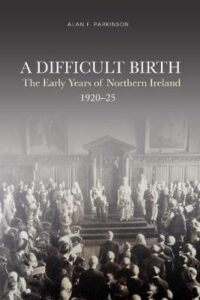 By Alan Parkinson
By Alan Parkinson
Published by Eastwood Books (2020)
Reviewer: Kieran Glennon
Alan Parkinson’s 2004 book, Belfast’s Unholy War: The Twenties’ Troubles, remains one of the landmark contributions to the history of the north during the revolutionary period. He followed this in 2012 with the equally excellent Friends In High Places: Ulster’s Resistance to Irish Home Rule, 1912-14, a penetrating analysis of how unionist opponents to Home Rule successfully leveraged their close ties with the Conservative Party in Britain.
Parkinson’s first book and Jim McDermott’s Northern Divisions: The Old IRA and the Belfast Pogrom 1920-22 (2001) were trailblazing works on this period, all the more notable because both pre-dated the release by the Military Archives of its Bureau of Military History (BMH) witness statements and later the files of the Military Service Pensions Collection (MSPC). Over the years, the work of these pioneering authors has gradually been augmented.
Compared to these predecessors, Robert Lynch’s The Northern IRA and the Early Years of Partition 1920-22 (2006) enjoyed the advantage of access to the BMH collection. In Frontiers of Violence: Conflict and Identity in Ulster and Upper Silesia 1918-1922 (2010), Tim Wilson provided a fascinating comparison between the violence in the north and in another contemporary conflict in eastern Europe.
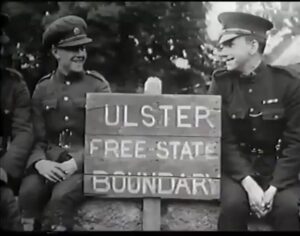
A number of titles in more recent years have examined the period from either a local or a regional perspective.
As the Decade of Centenaries progressed, the valuable Four Courts Press series of county-based studies was added to by Fergal McCluskey with Tyrone: The Irish Revolution 1912-23 (2014) and by Adrian Grant with Derry: The Irish Revolution 1912-23 (2018). 2014 saw not one, but two biographies of Frank Aiken – Bryce Evans and Stephen Kelly edited a collection of essays in Frank Aiken: Nationalist and Internationalist and this was followed by Matthew Walker’s Frank Aiken’s War: The Irish Revolution, 1916-23.
To the great relief of researchers and their eyesight, Ernie O’Malley’s almost-impenetrable handwriting was rendered legible by Síobhra Aiken, Fearghal Mac Bhloscaidh, Liam Ó Duibhir and Diarmuid Ó Tuama, who edited The Men Will Talk to Me: Ernie O’Malley’s Interviews with the Northern Divisions (2018).
The last decade has seen the publication of many new books on the period of partition and the creation of Northern Ireland.
Last year brought two analyses of partition: Robert Lynch’s The Partition of Ireland: 1918-1925 included a ground-breaking study of the plight in Dublin of refugees from the Belfast pogrom and it was followed by Cormac Moore’s excellent Birth of the Border: The Impact of Partition in Ireland. This summer, Christopher Magill’s Political Conflict in East Ulster, 1920-22: Revolution and Reprisal was published, containing fascinating new research on the composition of the B Specials.
A still-anticipated addition to the literature is Brian Feeney’s Antrim: The Irish Revolution 1912-23; its publication was originally due in October of this year but now appears to have been deferred until February 1921. However, Feeney’s difficulty is Parkinson’s opportunity and his latest book, A Difficult Birth: The Early Years of Northern Ireland 1920-25, has just been published.
Unfortunately, the vast majority of the titles listed above appear to have passed him by.
Only two – McDermott’s and Lynch’s 2006 work – are included in a surprisingly perfunctory and dated Select Bibliography and of the others mentioned, only two are referenced a couple of times in the text, those being the ones by Grant and by Aiken et al.
Sources
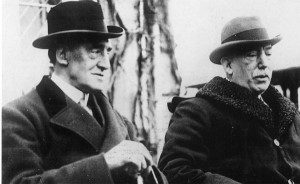
This lack of engagement with the recently published history of the period is all the more surprising considering that Parkinson appears oddly content to rely on secondary rather than primary sources.
Edward Carson’s incendiary speech on 12th July 1920 is generally acknowledged as having contributed to the shipyard expulsions which followed nine days later; this speech was reported in the press at the time, so it seems surprising that Parkinson opts to point to its quotation in, of all places, Michael Farrell’s Northern Ireland: The Orange State.[1]
At times, this over-reliance on secondary sources can lead Parkinson into somewhat awkward territory. For example, in his discussion of the 1921 Raglan Street ambush in Belfast, he begins with an airily dismissive “Although some have regarded the Raglan Street shootings of 10 July as being improvised and the outcome of circulating rumours inside west Belfast’s nationalist community…”
This refers to an unpublished statement of Belfast IRA officer Seán Montgomery, quoted in Northern Divisions, which provides critically-important context for what happened in Raglan Street that night – Montgomery and Tommy Flynn, the O/C of the IRA in the Lower Falls were informed by the 3rd Northern Division’s Intelligence Officer that:
“…the Parish Priest of St. Paul’s had the new D.I. of Springfield Barracks in with him and that if anything happened that night it wasn’t his fault as he was not in charge. D.I. Nixon was taking over for a short time, so when Nixon was there we could guess what for.”[2]
Parkinson then goes on to cite uncritically a quotation in Gerry Adams’ Falls Memories in which Seán Mac Iomaire describes his own participation in the incident. But at no point does Parkinson appear to realise that Seán Montgomery and Seán Mac Iomaire are one and the same.
Parkinson is superb at using contemporary press sources. Less so at using the latest primary and secondary sources for the period.
As a result, in his treatment, the same individual talking about the same incident in the same words, quoted in two different books, is at once a source of rumour to be disdained and at the same time, evidence on which to rely. A copy of the original statement by Montgomery/Mac Iomaire is in the National Library of Ireland – had Parkinson referenced it, his blushes might have spared on this occasion.[3]
However, Parkinson is superb at marshalling an important primary source – the contemporary newspaper reporting of what was happening in Belfast. At the time, Belfast’s daily newspapers were divided in exact proportion to the city’s population: one of the four, the Irish News, had a nationalist perspective, while the other three – the Belfast News Letter, Northern Whig and Belfast Telegraph – were unionist in outlook. All four were equally partisan, both informing and reflecting the political views of their respective audiences. Parkinson makes frequent use of all four to present a scrupulously balanced narrative.
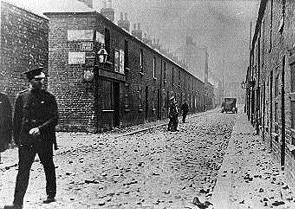
One key advantage of Belfast’s Unholy War was a series of interviews Parkinson conducted with people who had lived through the original pogrom, generally as children. These interviews are revisited here and they illustrate vividly how the period was experienced at first hand.
This use of testimony from observers makes all the more baffling the fact that little use is made of the personal accounts of participants. The exceptions are Seán Montgomery/Mac Iomaire and the memoir of a one-time RIC officer based in Tyrone from 1920-22.[4]
Given the online availability via the Military Archives website of dozens of BMH witness statements made by northern IRA members and an even more extensive archive of MSPC files – to date, almost two hundred for Belfast and Antrim alone – it is extraordinary that Parkinson makes no use of any of these.
This omission may have been deliberate, in order to maintain a sense of balance – there is no corresponding archive as rich in terms of accounts from unionist participants; however, even then, only sparing use is made of the papers of senior UVF figure Fred Crawford, held by the Public Record Office of Northern Ireland.
So, if Parkinson has not engaged with either primary sources newly available since 2004, or the bulk of the literature on the subject published in the last ten years, what exactly is new about A Difficult Birth?
Perspective
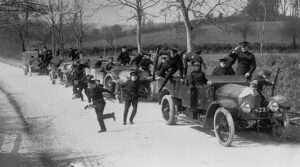
The main difference between this work and Belfast’s Unholy War is one of perspective: whereas, in the earlier book, Parkinson dealt in microscopic detail with each of the 498 deaths that occurred over the period in Belfast, here his camera pulls out considerably, allowing him to take a broader overview of various topics.
These are arranged in three long chapters which form the core of the book, one for each year during which the conflict raged – 1920, 1921 and 1922.
The chapter on 1920 works well but those on 1921 and 1922 others lose their way somewhat
First, however, there is a preface and a scene-setting introduction. In the former, he addresses the perennial question: what to call what happened in Belfast in those years – was it a pogrom? His answer is admirable in its formulation: “Although this conflict cannot be considered a fully-fledged pogrom, a better term to describe its nature is difficult to find…”[5]
The 1920 chapter works well. After an overview of events in Derry in the early summer of that year, Parkinson devotes a lengthy section to the Belfast shipyard and industrial expulsions in July, observing that “Such hatred was fuelled by propaganda emanating from a unionist leadership that twinned the great ‘evils’ of Irish republicanism and Bolshevism.”[6] The latter reference is of course to the “rotten Prods” – socialists and trade unionists who were also attacked by loyalists.
Parkinson also traces the development of the Ulster Special Constabulary, noting the inspiration that unionists drew from the “peace picket” manned by ex-servicemen and organised in July 1920 by the Church of Ireland vicar of Ballymacarrett in east Belfast, Rev. John Redmond. However, he glosses over the less than stellar performance of a similar body set up to maintain peace in Lisburn after rioting there followed the killing of District Inspector Oswald Swanzy in August 1920 – several of those special constables were themselves charged with rioting.
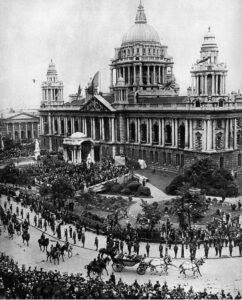
In the 1921 chapter, Parkinson’s intended structure starts to wobble somewhat, as he begins to overlay in-depth thematic discussions onto the overall chronological framework. Inevitably, some of the themes explored leak backwards into 1920 or forwards into 1922, so the text begins to be peppered with “see above” or “see Chapter 3 below.”
The chapter opens with an examination of the structure and role of the IRA throughout the pogrom in Belfast and while he is right to characterise it as having a primarily defensive orientation in 1920, some annoying errors creep in.
For example, he attempts to assess the membership of the IRA but does so without any reference to the Nominal Rolls of IRA membership contained in the MSPC, which enumerate and even name those members.[7]
Even more irritating is his description of Eoin O’Duffy as still being the IRA’s Truce Liaison Officer for Ulster when the RIC raided St Mary’s Hall in Belfast on 18th March 1922 – by that stage, O’Duffy had become the IRA’s Chief of Staff in Dublin and the Truce Liaison role had been taken over by Joe McKelvey of the 3rd Northern Division. Such a basic mistake suggests someone who has not quite fully got to grips with the republican subject matter.[8]
After dealing with the IRA’s sectarian bomb attacks on trams in November 1921, the narrative retreats to the summer of that year and the hugely significant 1921 General Election and the opening of the Parliament of Northern Ireland, both of which had been put in place by the Government of Ireland Act of 1920. These rightly occupy the core of this chapter.
Parkinson then proceeds to assess the Belfast boycott instituted by the Dáil in 1920, begging the question: why was this assessment not in the previous chapter? The boycott was a largely performative act of solidarity by southerners with northern Catholics; while damaging northern banks to some extent, it was never likely to affect key northern industries such as shipbuilding. In addition, as Parkinson observes:
“The boycott was also counter-productive in the sense that such economic intimidation by a larger state of its smaller neighbour was unlikely to heighten the desire of the latter to forge a political union.”[9]
Rather inexplicably, the 1921 chapter does not conclude, as one might expect, with the signing of the Treaty, but moves on to consider the two Craig-Collins Pacts of 1922.
Even after this, Parkinson is still not finished, following this section with an in-depth look at loyalist paramilitary violence, particularly the attacks carried out by the Ulster Protestant Alliance. To give him his due, he does not shy away from the horrific details of some of these acts, highlighting the case of Susan McCormick, the Catholic housekeeper of a doctor living in the unionist Donegall Pass area of Belfast – in June 1922, a loyalist gang called to the doctor’s house and set her clothes on fire. Luckily, she survived.[10]
Structure
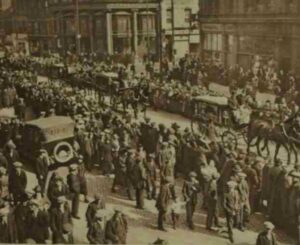
The chronological scaffolding continues to creak as the 1922 chapter opens.
The first section has the uncompromising title, “Uniformed assassins” and here, Parkinson examines the role of what he describes as “rogue” and “miscreant” police officers and what Belfast nationalists of the time called the “murder gang” – a group within the RIC who carried out killings of nationalists as reprisals for fatal attacks on the police.
He surveys their activities in some detail, from their first appearance in September 1920, through the first half of 1921 and culminating in the “Arnon Street killings” committed in April 1922.
Strangely, this section is then followed by an in-depth analysis of the notorious McMahon family killings, carried out by the same group, but in the previous month. Here, he notes that while police responsibility was never definitively proved to the satisfaction of an inquest – the failing being that of the coroner, rather than availability of eye-witnesses – he does make the compelling point that whoever carried out the attack enjoyed access to motor transport and were able to use it to move around north Belfast during the curfew without being troubled by police checkpoints.[11]
Warming to the theme of police transgressions, he then moves on to consider the killing of three nationalists in Cushendall, Co. Antrim by Specials in June 1922.
The circumstances of this incident were disputed at the time and investigated twice, once by an English civil servant, whose verdict the Northern Ireland government didn’t like, then by a senior RUC officer, whose verdict they did like. Parkinson initially sits on the fence: “Like many other cases involving the security forces, it is difficult to come to firm conclusions regarding their degree of culpability.” But later in the same paragraph, he does offer a verdict:
“Nevertheless, despite the strident assertions that paramilitary forces had opened fire on the police tenders, available evidence…did not back up such claims. No weapons were discovered either near the bodies of the victims or in follow-up searches in the immediate locality and the security forces sustained none of the injuries that might well have been anticipated following such a surprise ‘attack’ by allegedly large groups of armed assailants.”[12]
Parkinson then moves on to consider the IRA’s northern offensive of May 1922 and at this point, the chronological superstructure finally comes crashing down. This section is followed by a review of the IRA’s border campaign of the previous spring, which involved kidnappings of unionists in early February, a gun battle with Specials in Clones later that month and concluded in the battle of Belleek-Pettigo as May passed into June. After this, Parkinson looks at the activities of the “Falls firebugs” – a series of arson attacks committed by the IRA’s Belfast Brigade in May and June as part of the northern offensive already mentioned.
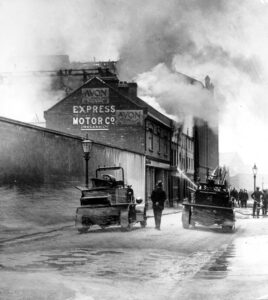
The scene then shifts to south Armagh at the end of June and the killings of Protestant civilians committed by the IRA at Altnaveigh.
While a ruthless tit-for-tat vendetta had been running between the Specials in the area and Frank Aiken’s 4th Northern Division of the IRA, any attempt to link that to the slaughter of six civilians is proved spurious by the identity of one of the victims: Elizabeth Crozier, wife of a 67-year-old farmer. The Specials did not recruit elderly women.
This chaotic chapter then lurches to a conclusion by examining the Civil Authorities (Special Powers) Act, introduced two months previously in early April, the internment provisions of which were put into effect the following month.
Each of the sections referred to is commendable in itself and each explores the relevant topic in considerable depth. But the influence of an uncompromising editor, who could wrestle them into some kind of logical sequence, is sadly lacking.
A postscript entitled “A Brave New World” brings the book to a close by looking at events after 1922. Parkinson surveys a fascinating educational reform introduced by the Northern Ireland government in 1923 which, uniquely, attracted fierce opposition from both Protestant and Catholic clergymen before being withdrawn. Of course, the process, deliberations and ultimate binning of the Boundary Commission in 1925 are also discussed.
But Parkinson is not finished yet. A brief overview of the period between the end of the pogrom and the start of the more recent Troubles follows before we are launched into a comparison between the two conflicts and a discussion around the emergence of the DUP and Sinn Féin. While consideration of these subjects would be worthwhile and valid elsewhere, they have no business being included in a book which in its subtitle announces itself as being concerned with the history of the first half of the 1920s – crudely, by 1925, the (modern) Troubles hadn’t happened yet.
However, from the jaws of defeat, Parkinson does manage to snatch, if not a victory, then at least a credible exit. Surveying the landscape that had emerged by the mid-1920s, he concludes:
“Thus nationalists, on the whole, abstained from formal participation in the public life of the new state, and unionists spent most of their energy ensuring the safety of their new area of jurisdiction by implementing draconian Special Powers legislation and by refusing to offer a fig-leaf to members of the minority community to help foster their participation in political and civic life.”[13]
Conclusion
In Northern Ireland: The Orange State, Farrell described the British army as behaving with “fine impartiality” during the first outbreak of violence in Belfast in July 1920.[14] The same might equally be said of Parkinson’s approach to his subject matter here – the shortcomings and failings of unionists, nationalists and republicans are all highlighted without fear or favour.
Parkinson’s work is studiously impartial. But suffers from lack of engagement with the latest scholarship.
If he were to be accused of any sort of bias, it would be that he is perhaps too Belfast-centric. While the events in Lisburn and Derry in 1920, as well as those in Belleek-Pettigo, Cushendall and Altnaveigh in 1922 are all covered, these are treated as mere episodes; none of the six counties of Northern Ireland are even named in an admittedly sparse index.
An overall verdict would be that the book isn’t necessarily bad, but that it could have been so much more. This reviewer was excited when it was delivered, but having read it, felt disappointed. It may be that Belfast’s Unholy War created an unrealistic level of expectation, but there was an opportunity here to produce another landmark history of the period. Unfortunately, it was an opportunity not taken, due to Parkinson’s apparent unwillingness to engage either with archival material released since 2004, or with the work of a younger generation of historians.
A chronological approach would have worked, or a purely-thematic approach would equally have worked but trying both, with one overlaid on top of the other, creates a needlessly clunky structure. This just added to the overall sense of frustration.
As regards a recommendation, at the time of writing there are still second-hand copies of Belfast’s Unholy War available online. If those are snapped up as quickly as they ought to be, then the public libraries have just re-opened.
Kieran Glennon is the author of From Pogrom to Civil War, Tom Glennon and the Belfast IRA. See also his recent article The Dead of the Belfast Pogrom.
References
[1] Alan Parkinson, A Difficult Birth: The Early Years of Northern Ireland 1920-25 (Dublin, Eastwood Books, 2020), p23
[2] Jim McDermott, Northern Divisions: The Old IRA and the Belfast Pogroms 1920-22 (Belfast, Beyond The Pale Publications, 2001), p99
[3] Parkinson, A Difficult Birth, p88; Statement of Seán Montgomery, O’Mahony Papers, National Library of Ireland, Ms 44,061/6
[4] John McKenna, A Beleaguered Station – the Memoir of Head Constable John McKenna, 1891-1921 (Belfast, Ulster Historical Foundation, 2009), referenced by Parkinson, A Difficult Birth, p232-4
[5] Parkinson, A Difficult Birth, px
[6] Parkinson, A Difficult Birth, p32
[7] Nominal Rolls, 3rd Northern Division, MSPC, Military Archives, MSPC/RO/401-406A
[8] Parkinson, A Difficult Birth, p85
[9] Parkinson, A Difficult Birth, p131
[10] Parkinson, A Difficult Birth, p156
[11] The Minister for Home Affairs, Dawson Bates, used a provision of the Special Powers Act to avoid having the killings investigated by a coroner’s jury, instead deciding that the inquest would feature a coroner sitting alone. The coroner duly returned a verdict that the killings were the work of “some member or members of an unlawful assembly.” See Tim Wilson, ‘The most terrible assassination that has yet stained the name of Belfast’: the McMahon murders in context, Irish Historical Studies, Volume 37, No. 143 (May 2010) p83-106
[12] Parkinson, A Difficult Birth, p185-6
[13] Parkinson, A Difficult Birth, p281
[14] Michael Farrell, Northern Ireland: The Orange State (2nd Edition, London, Pluto Press, 1980), p29